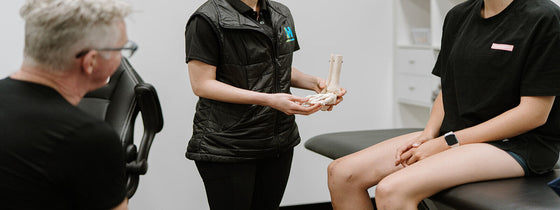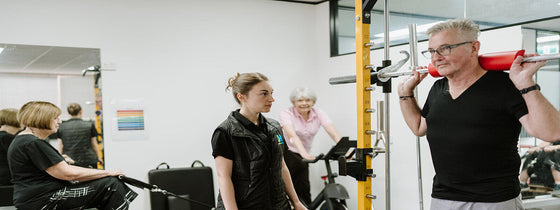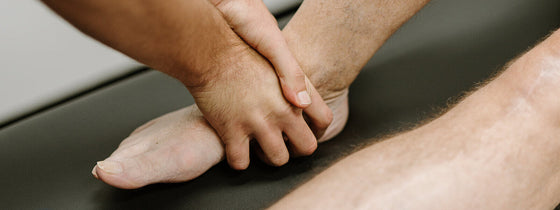Shin splints, or medial tibial stress syndrome (MTSS), is a condition that causes discomfort on the inside, or front, of your leg – right between your knee and ankle. It can affect up to 35% of people who run and/or jump. But what is happening to cause this pain?
Medial tibial stress syndrome is an inflammation of the muscles, tendons, and bone tissue around your tibia. This common, exercise-related, problem typically develops after physical activity. Any vigorous sports activity can bring on shin splints. We see this a lot across the pre-season phase of sport training, or from people who are just beginning a new fitness program. It may occur after a certain point in your training (for example, 20 minutes in, or after 5km) but, eventually, it left unmanaged, your shin pain may be present before, during and after your run or training session. While it can be extremely frustrating, there are a few physio-approved tips to treat the symptoms and prevent it from occurring again.
Simple measures can help relieve the immediate pain of shin splints. Rest, ice, compression and stretching/flexibility exercises can often help. An important aspect of managing shin splints is understanding what triggers the condition in the first place. This can include:
If you find yourself suffering from this persistent condition, there are a few things you can do to help yourself get on top of the pain and back on your feet.
An in-room Physiotherapy appointment will address this condition in a few ways:
OHL’s group physio classes are another proven way to build strength and lower painful symptoms. In these sessions, your Physiotherapist will lead you through an individualised program in our Strength Lab, to give you the most impactful and efficient progress towards your personal physical needs and goals.
There’s nothing worse than a niggling pain that is stopping you from doing the things you love. If shin pain is taking the spring out of your step, we’d love to help you get right back on track.

If you're experiencing back or neck pain with neurological signs and symptoms, a thorough neurological examination is crucial for accurate assessment and effective treatment. In this Optimal Tip learn more about what we mean by completing a neurological exam!

Squats, deadlifts, and calf raises are key movement patterns that should be part of every strength and conditioning program—regardless of age and activity level. These functional movements support joint health, improve posture and balance, and reduce the risk of injury while building strength where it matters most.

A ganglion cyst is a fluid-filled swelling that typically forms over a joint or tendon sheath, causing discomfort and pain, especially when pressing against nerves or joints. Proper assessment and treatment, including physiotherapy, are essential for managing symptoms and improving function in the presence of a ganglion in your hand, foot, or wrist.